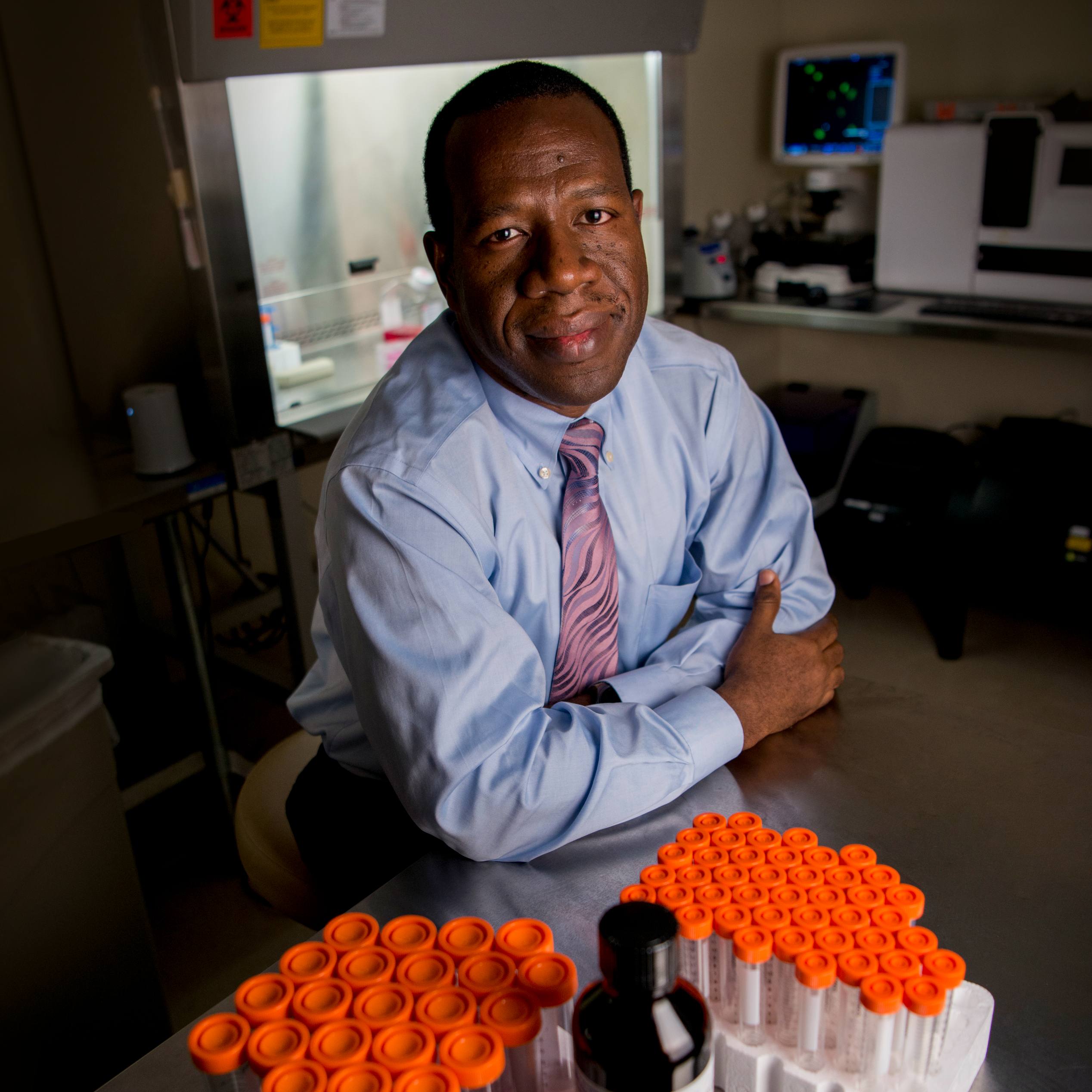-
Science Saturday: Confronting polycystic kidney disease, a silent killer

When Fouad Chebib, M.D., was 16 years old, his father sat him and his sister down and told them he had polycystic kidney disease (PKD). The kidneys of people with the condition become jammed with dense, fluid-filled sacs, causing them to increase in size and decrease in function. His father's kidneys were already failing, and he would soon have to begin dialysis. Eventually, his father's only hope for survival would come from a kidney transplant, a long shot in their home country of Lebanon.
Rattled by the news, the younger Chebib logged on to their family computer to dig up all he could about his father's illness.
"I learned that Mayo Clinic is the best place to be for polycystic kidney disease," he said. "I decided right then that I'm going to cure this disease. I'm going to become a PKD nephrologist at Mayo Clinic."
Twenty-five years later, Dr. Chebib is a proud member of the large, multidisciplinary team at Mayo Clinic that remains the leader in PKD research. Their work continues to build the foundation of knowledge around this life-threatening illness while also developing innovations to advance care for the more than 1 in 1,000 people affected worldwide.
Over the next decade, those advances may enable clinicians to predict the disease before it starts and treat it with new medications. The goal? To make dialysis and kidney transplant for PKD a thing of the past.
The origins of the disease
Even though the term "polycystic kidney disease" goes back to the late 1800s, the first real breakthroughs in understanding its causes and potential treatments didn't come until the late 1900s. By the time the 16-year-old Chebib searched the internet for any mention of PKD, researchers had discovered the two genes responsible for the majority of cases, which they named PKD1 and PKD2.
That first gene was discovered by geneticist Peter Harris, Ph.D., who moved to Mayo Clinic in 2000. Since then, Dr. Harris has built a program focused on identifying the many genetic mutations that cause PKD and their effect on the course of the disease.
He hosts an online repository of more than 2,000 common genetic variants associated with the autosomal dominant form of PKD, known as the ADPKD Mutation Database. It provides an important resource for investigators nationally and internationally who are studying and treating the disease. Autosomal dominant PKD (ADPKD), where only one parent needs to have the disease for it to pass to their children, is the most common form of PKD.
It is still not exactly clear how mutations in PKD1, PKD2 and most genes in the database cause PKD. But early studies have provided enough clues to enable Mayo researchers to identify the first potential drug for treating the disease. That research traced the growth and expansion of kidney cysts back to a cascade of intracellular events known as the cyclic AMP signaling pathway. Cyclic AMP has been shown to play a role in all aspects of PKD, including the initiation, progression and end stages of the disease.
So when one study showed that targeting a molecule called vasopressin could effectively halt cyclic AMP production, nephrologist Vicente Torres, M.D., Ph.D., took notice. He launched a collaboration and a series of laboratory experiments and clinical trials, eventually showing that this strategy could slow the progression of PKD in patients. In 2018, FDA approved the drug tolvaptan for use in patients with ADPKD at risk of rapid disease progression.
Today, Dr. Torres and his colleagues continue to investigate the cyclic AMP pathway in search of new drug targets for PKD treatment. "This pathway is quite complex, and it involves a lot of different steps and different mechanisms," he said. "The rationale for our current work is we want to exploit that pathway because we know it is an open door, but it hasn’t been opened completely."
Predicting progression
Research has shown that for every four years a patient takes tolvaptan, the predicted onset of kidney failure is delayed by one year. But the drug has side effects that not everyone is able to tolerate.
However, not every patient with PKD will have the same experience or need to be treated with the drug in the first place. In fact, Mayo research has shown that the clinical trajectory of patients can vary widely, even within families. Some patients, like Dr. Chebib’s father, reach kidney failure in their 40s; others might not experience the brunt of the disease until their 70s or 80s.
Investigators at the Mayo Clinic and three other centers in the United States have followed 250 patients for more than 20 years through an observational study called the Consortium for Radiologic Imaging Studies of Polycystic Kidney Disease (CRISP).
They found that the pictures they took of patient kidneys using MRIs held insights into the severity and progression of each individual patient’s disease. The researchers discovered that the size of the kidneys — specifically, an attribute known as total kidney volume — correlated with how rapidly kidney function was going to decline in the future.
In 2016, the discovery of a PKD prognostic biomarker also provided clinicians with a new tool to predict when kidney failure may occur and if they should recommend aggressive treatment.
"Our approach helps to identify the patients with the more severe, rapidly progressive disease, where the benefits of drug treatment clearly outweigh the risks," said Dr. Torres.
Global diagnosis
Assessing total kidney volume, though incredibly informative, involves analyzing dozens of kidney images, one slide after another — a laborious process that can take about 45 minutes per patient. With the innovations developed at the PKD Center at Mayo Clinic, researchers now use artificial intelligence (AI) to automate the process, generating results in a matter of seconds. Dr. Chebib said that he and his colleagues want to tap AI to do even more to advance the care of patients with PKD.
They plan to create a web-based interface that enables physicians worldwide to upload their data — imaging data, clinical data, omics data like genomics and metabolomics — and receive an accurate diagnosis, prognosis and treatment plan on the other end. This virtual PKD center is part of the researchers' vision for sharing their expertise and technology on a wider scale by the year 2030.
"My father was my inspiration to be in this field," said Dr. Chebib. "He gave me a passion that drives me to make sure that no one would suffer from polycystic kidney disease, as he did."
Learn more
Read more stories about advances in individualized medicine.
Register to get weekly updates from the Mayo Clinic Center for Individualized Medicine blog.
Join the conversation
For more information, visit Mayo Clinic Center for Individualized Medicine, or Twitter at @MayoClinicCIM.











